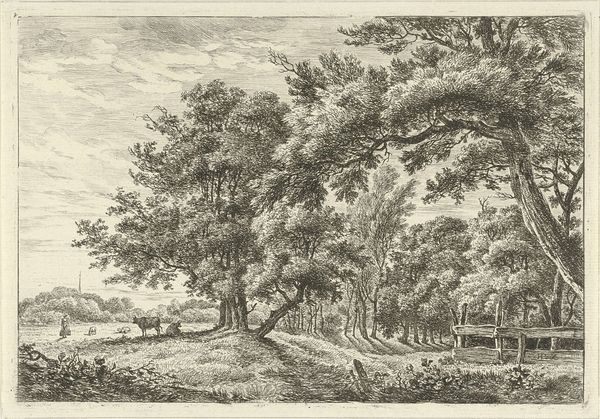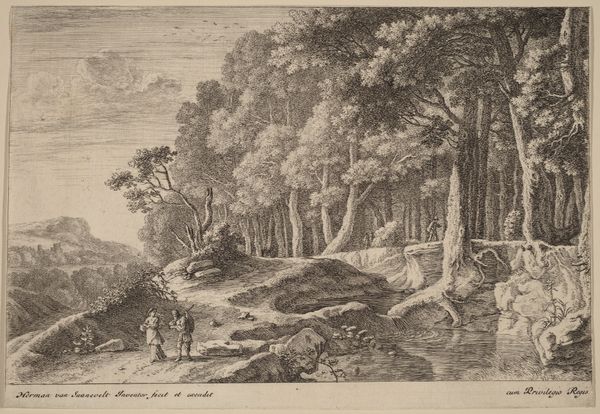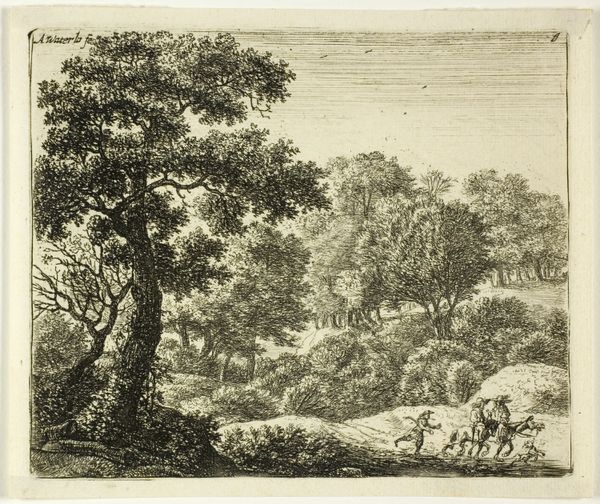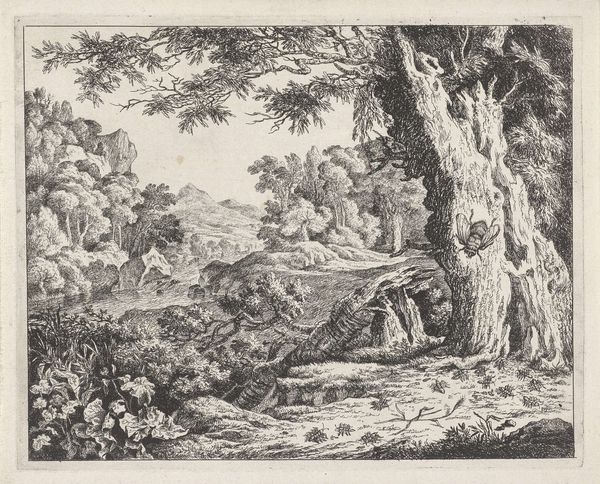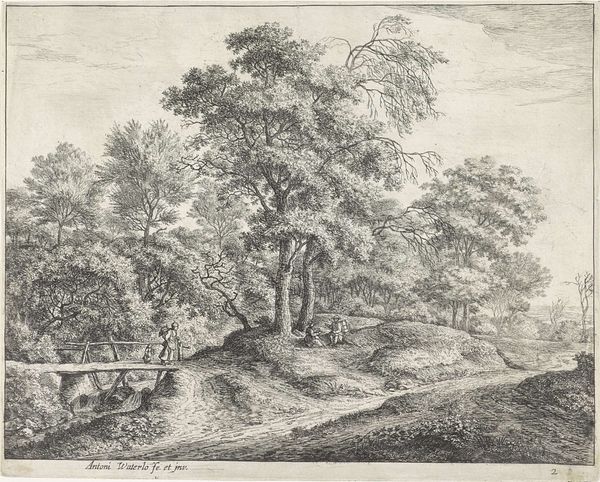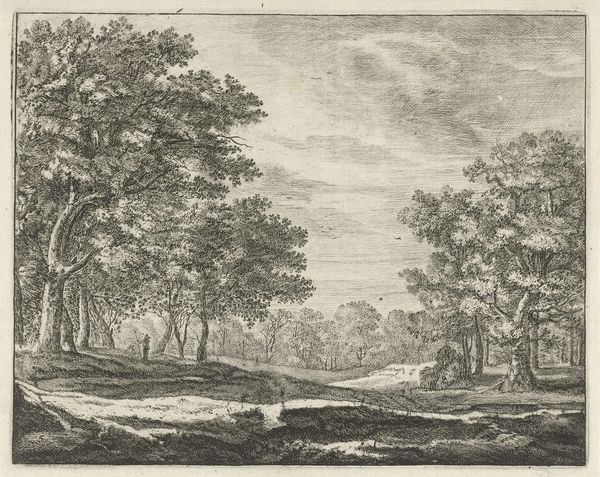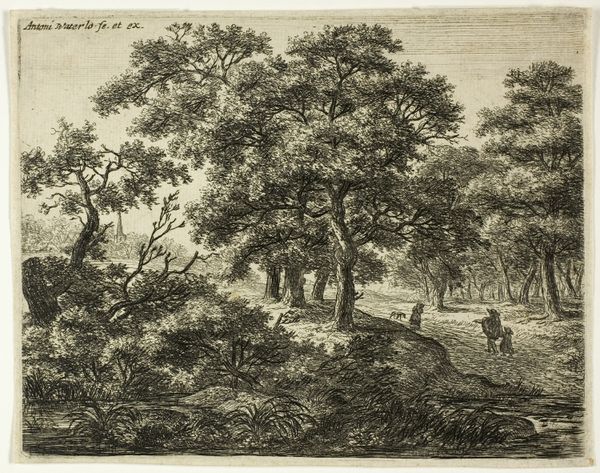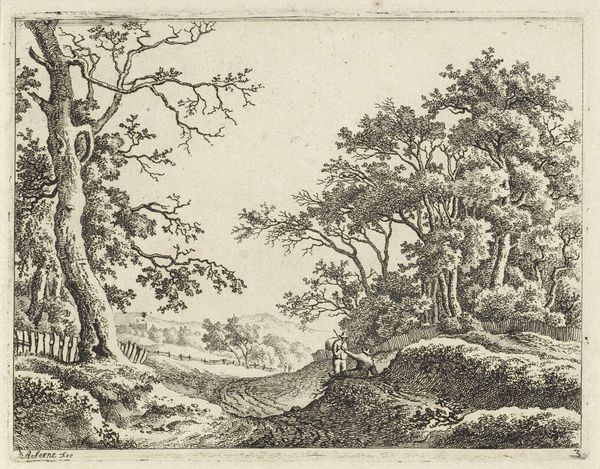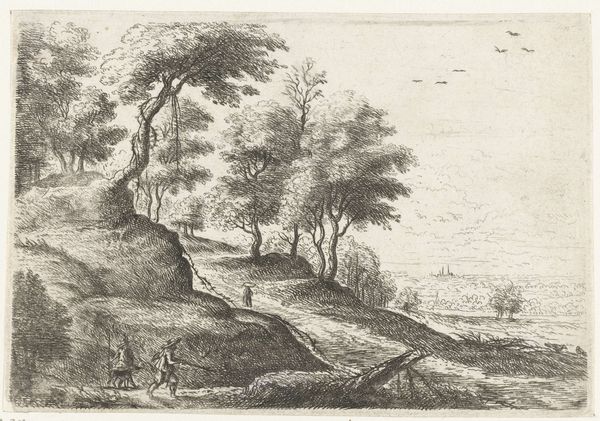
print, etching
#
baroque
# print
#
etching
#
landscape
#
figuration
Dimensions: height 295 mm, width 431 mm
Copyright: Rijks Museum: Open Domain
Curator: Here we have Hendrick Hondius I’s 1607 etching, "Repentance of the Prodigal Son; He Eats From the Swine's Trough." It's currently part of the Rijksmuseum collection. What strikes you most when you look at it? Editor: The darkness. Despite it being a landscape, it feels intensely claustrophobic and laden with symbolism of desperation and perhaps spiritual crisis. All those tightly packed trees feel so weighty. Curator: The density certainly mirrors the prodigal son's inner turmoil. Baroque art frequently uses landscape not just as scenery but as an emotional mirror. The choice of the prodigal son story also reflects anxieties prevalent in early 17th-century society—fears about moral decay, economic instability... Editor: Precisely. Notice how the swine are almost overflowing from the trough. Hondius isn't merely depicting hunger, but excess, the irony of needing to eat from filth while surrounded by implied abundance. It's about spiritual starvation amidst material possibility, an idea that the feeding animals might as well also represent vices. Curator: Good point. The detailed rendering is characteristic of printmaking at the time. Dissemination of ideas and moral narratives happened via these portable artworks and, of course, this subject matter would have been readily received in regions recovering from war and the ongoing disruption related to shifts in religious thought. Editor: That gaunt figure amongst the swine… He embodies humility at its most base, doesn’t he? There's no heroic element here, just utter destitution. Even the landscape seems to reject him; he's exiled to the lowest corner, almost falling off the page. I'd venture to suggest it makes this a universal appeal: who hasn't at least at some point felt that kind of abjection and hopelessness? Curator: That universal resonance explains its enduring power, I think. By grounding religious narratives in identifiable social concerns, artists made the viewers part of the story. They prompted individuals to actively question their own paths within existing societal and moral boundaries. Editor: Yes. And perhaps even contemplate their capacity for repentance. It's sobering to consider how relevant such themes continue to be, isn't it? Curator: Absolutely, and it gives us something to think about as we head to the next artwork.
Comments
No comments
Be the first to comment and join the conversation on the ultimate creative platform.



